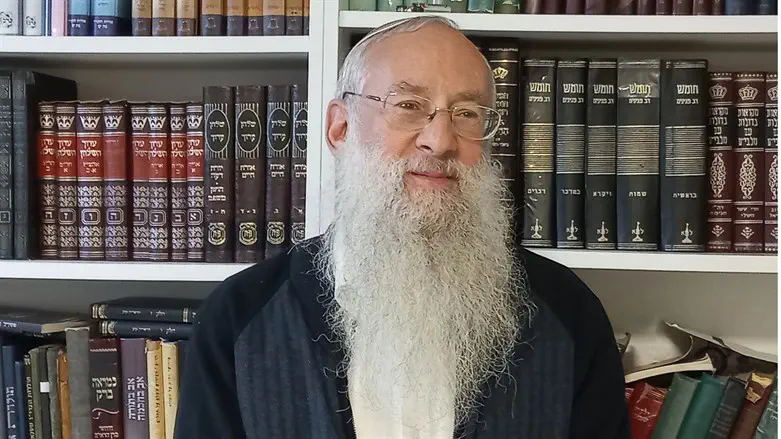
In our previous essay, we saw how unity is the vehicle for the Nation of Israel to receive the Torah. The Ohr Samayach writes that the condition of unity necessary to receive the Torah was not a one-time thing. The Divine structure of the Torah is such that it can only be kept, even after Matan Torah, by all of the nation together. Worthy as the most righteous scholar may be, he alone cannot fulfill the Torah in its entirety, as it says: "And all the nation answered TOGETHER and said: All that G-d said we shall do." The Ohr Samayach explains:
“In the Torah there are commandments that pertain to the Kohanim, to the Levites, and to the High Priest. There are other precepts unique to the king and of the Sanhedrin. Others commandments apply specifically to landowners or house-owners. Thus only by Clal Yisrael, the encompassing community of Israel, can the Torah be fulfilled in its wholeness. For the entire nation is as one man; some individuals are like the head, others like the eye...” (Meshech Chochma, Shmot, 19:8).
The “Meshech Chochma” stresses that the Torah was meant to be fulfilled by the Nation as a whole unit. The individual is not the direct address of the Torah, for, "G-d does not rest His Name on the individual." Unity is a condition for receiving and fulfilling Torah because unity is the Divinely-created structure and essence of Am Yisrael. Therefore all of Israel are responsible for one another, for we are all one!
Ever since Sinai, the unifying factor in the Nation of Israel’s oneness became Eretz Yisrael. It is important to note that the unity of Am Yisrael comes to expression and can only become a reality when the Jewish People are living in Eretz Yisrael. In the Book of Shmuel, the Children of Israel are described as “One Nation in the Land” (Shmuel II, 7:23). The Zohar asks, “When are the Jewish People one?” It answers: “In Jerusalem below Israel is called one, as it says: ‘One nation in the Land.’ Certainly, in the Land they are one, within it they are called one, and not when they are outside of it. For it would have been enough to say: ‘Who is like Your nation, Israel, one nation.” (So why does it say ‘Who is like Your nation, Israel, one nation IN THE LAND’?) Because they are only called one when they are in the Land” (Zohar, Vayikra 93).
Similarly, the Maharal teaches that when the Jewish People enter the Land of Israel they become one (Netiv HaTzdaka, Ch.6). He brings proof for this from the Gemara in Sanhedrin 43 that until the Jews crossed the Jordan River they were not responsible each for the other, for "arvut" (responsibility one for the other) is when they are all as one. So too, the Sochochover Rebbe, the Shem M’Shmuel writes: “Eretz Yisrael unites all of Clal Yisrael, for they were not ‘aravim’ – responsible one for the other until they crossed the Jordan because Eretz Yisrael unites Israel and makes them like one person.”
This understanding finds deep expression in the words of the Gerrer Rebbe (the Sfat Emet). Referring to the Land of Israel, a verse in the Book of Yishayahu (42:8) states: “I give the Neshama (soul) to the nation upon it.” The Neshama is what unifies the limbs to exist as one living body. The Gerrer Rebbe explains that when the Jews enter the Land of Israel they receive a "Neshama Yeteira" - the extra Neshama – like on Shabbat- as it says: “One nation in the Land… I give the Neshama to the nation upon it.” Just as Shabbat unifies the Jewish People together so too does the Land of Israel (Sfat Emet, Parshat Masei 5750).
To express this concept of national unity in a simple fashion, it should be obvious that the Jewish People cannot be united when they are scattered all over the world in separate communities from South Africa to Brazil to Canada and England. In addition, myriads of Jews in the Diaspora don’t live in Jewish communities at all. Rather they are dispersed all over, individuals amongst the non-Jews in non-Jewish lands. Nonetheless, whether they exist as individuals or in Jewish communities they are like the dry scattered bones of Ezekiel’s prophecy (Ch. 37, 1-14).
When do the lifeless bones receive a living soul and come together as one? The Prophet declares:
“So I prophesied as He commanded me, and breath came into them, and they lived, and stood up on their feet, an exceeding great army. Then He said to me, Son of man, these bones are the whole House of Israel …. Behold O My People, I will open your graves, and cause you to come out of your graves, and bring you into the Land of Israel. And you shall know that I am the L-rd, when I have opened your graves, O My People, and have brought you up out of your graves, and I shall put My spirit in you, and you shall live, and I shall place you in your own Land; then you shall know that I the L-rd have spoken and performed it, says the L-rd,” (Ezekiel, 37:1-14).
With the help of Hashem, we will continue to explore the concept and vital importance of unity in a subsequent essay.